Rank Species | ||
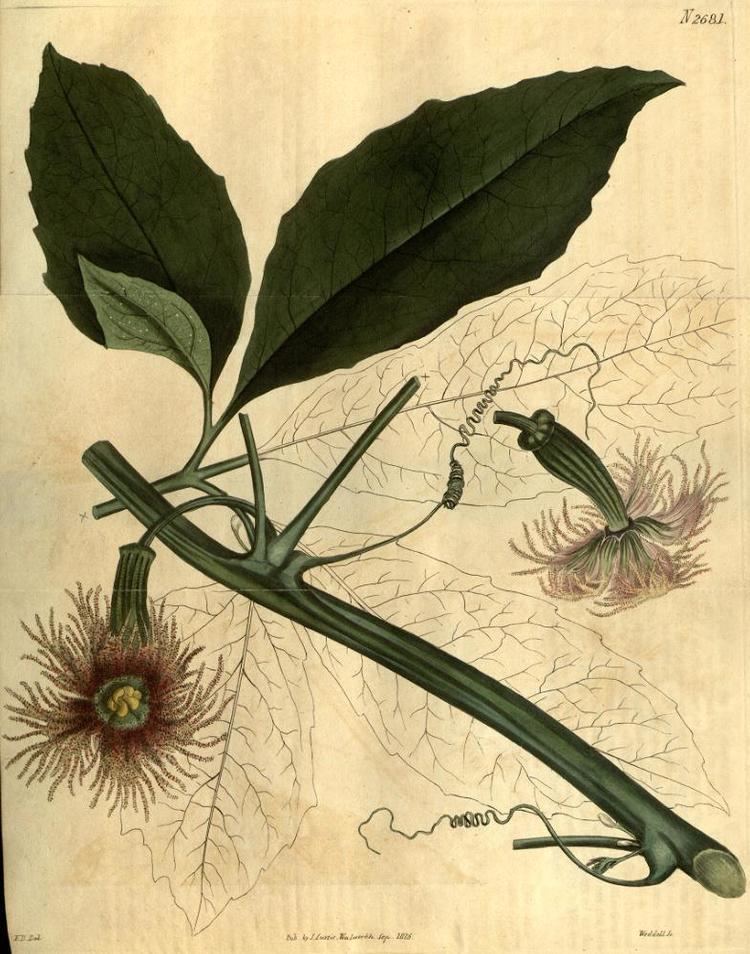 | ||
Similar Fluted Pumpkin, Aglio Rosso di Nubia, Cyclanthera pedata, West Indian gherkin, Tinda | ||
Telfairia pedata, commonly known as oysternut Cucurbitaceae family, (alternately spelled as 'oyster nut', etc.), queen's nut, Zanzibar oilvine (alternately spelled as 'oil vine', etc.), is a dioecious African liana which can grow up to 30 metres long, having purple-pink fringed flowers, and very large (30–90 cm × 15–25 cm), many-seeded, drooping, ellipsoid berries which can weigh up to 15 kg (though one old source from 1882 claimed up to 60 lbs). It is valuable for having edible fruit, seeds and oil.
Contents
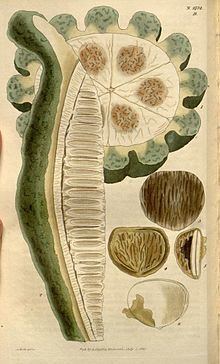
Propagation
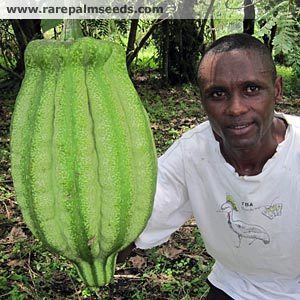
Propagation is by seed which are black to brown-red, recalcitrant and vary from 1g to 68g, with the smaller ones tending to have greater viability. They cannot survive desiccation and fungi are the main cause of seed loss.
Habitat
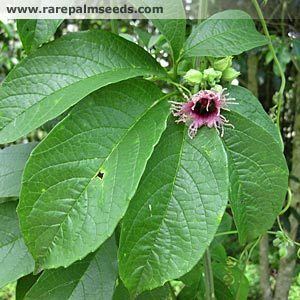
In its natural state, Telfairia pedata is found in high-precipitation tropical locales, in coastal and riverine forest lowlands, generally not elevated above 1,100 m.
Distribution
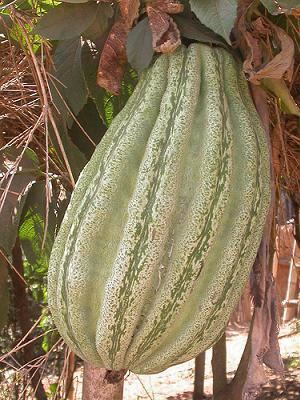
Although it is also cultivated as a crop plant in Ethiopia, Madagascar, Malawi, Mauritius, Rwanda, South Africa, Uganda, and Zambia, Telfairia pedata is native to only Tanzania (including the Zanzibar Archipelago) and northern Mozambique.
Uses

The fruits of Telfairia pedata are edible, but the principal value is found in the seeds (or "nuts") and the seeds' oil. The flavourful seeds are prepared in various culinary ways (cooked, roasted, pickled, etc.), but can also be eaten raw, and are given to nursing mothers to facilitate milk production. The versatile, mildly sweet oil from the seeds (marketed as ‘oyster-nut oil’ or ‘koémé de Zanzibar’) is used in cooking, cosmetics, soap and candle-making, and as a gastric and anti-rheumatism medicine; it is believed, by Chaga people of Tanzania, to be beneficial to give a tonic made from the seeds to women who have just given birth. The left-over cake of seeds from oil pressing is rich in fat and protein, and used as livestock fodder.
Fatty acids
The fatty acids which are found in the oil are here broken down by their average percentages:
Pests

Historically, few pests seem to negatively affect Telfairia pedata very seriously; an exception is the pentatomid shield bug (Piezosternum calidum), which has been known to ruin crops growing in Uganda. Other, more equal-opportunity pests may include Heterodera spp. of root-eating cyst nematodes; and insects, such as grasshoppers and termites, which can devour the entire above-ground portions of plants during a swarm.

Vines cultivated in Costa Rica have been attacked by borers in the main stem, which can be serious, and even kill the vines.
